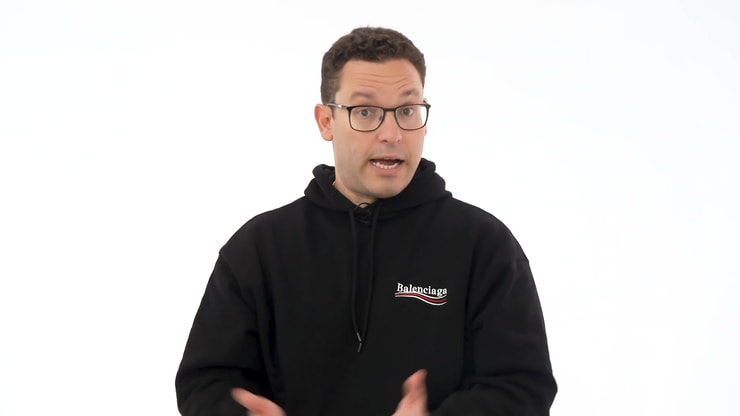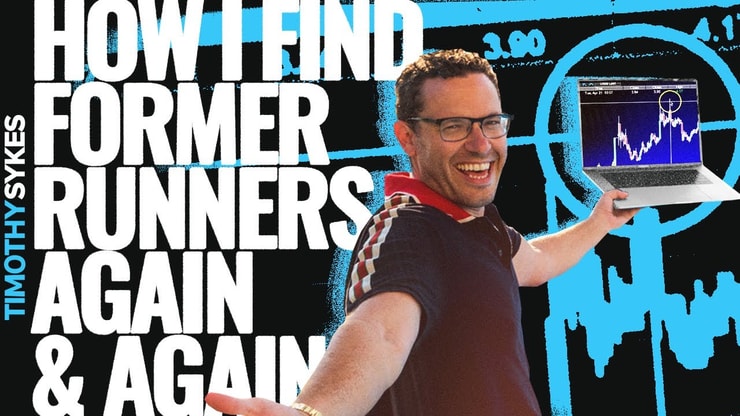Choosing the right stocks is the most important part of options trading. When you make random trades, you get random results.
But finding the right stocks is easier said than done. In this article, we’ll dive into the best ways to choose stocks for options trading.
New to options trading? Learn more about the basics of options trading and how to make money from it.
If you want to learn even more about options trading, there are quality mentors out there like my former student Mark Croock. He’s made $3.9 million in his career, mostly through trading options. His Evolved Trader program is one of the best options trading courses out there.
Even if you don’t trade options, the stock-picking tips below will help your trading. Let’s get into it!
Table of Contents
- 1 Do Detailed Stock Research
- 2 Identify Liquid Stocks
- 3 Look for Tight Bid/Ask Spreads
- 4 Review Historical Data and Charts to Identify Trends
- 5 Monitor Implied Volatility
- 6 Identify Future Events That Might Impact Stock Prices
- 7 Determine Your Trading Objective
- 8 Take Advantage of Stock Screeners
- 9 Build a Watchlist
- 10 Final Thoughts
Do Detailed Stock Research

2025 Millionaire Media, LLCResearch is your first step. Trades are like icebergs — 90% of the work happens under the surface.
Here are some of the things you should be looking at:
- Price action
- Volume
- Chart patterns
- Recent news
These factors should be the basis of any trade. They’ll give you context to understand any new developments.
Identify Liquid Stocks
Liquid stocks have a good amount of volume. Volume both stimulates demand — and lets you exit a trade when you want to.
Volume and liquidity aren’t the same though. Higher volume leads to better liquidity. Liquidity is more of a qualitative measure.
You might not think that liquidity is as important in options trading as in regular stock trading. It is.
Liquidity in options trading helps you sell contracts…
More Breaking News
- CGC Shares Plummet: Time to cut Losses?
- Charter Communications Seeks New Horizons: Curious Price Fluctuations
- Encompass Health’s Recent Surge: Analyzing Market Impact
It also stimulates the price action that will help your options trade execute.
Look for Tight Bid/Ask Spreads

2025 Millionaire Media, LLCThe bid/ask spread is related to supply and demand. It represents the difference between the buyer’s maximum price and the seller’s minimum price.
The application of bid/ask spreads in stock trading and options trading is similar. It’s a measure of liquidity.
Liquid stocks have narrow bid/ask spreads because there’s more demand. Meanwhile, illiquid stocks have wider bid/ask spreads because there’s less demand.
Review Historical Data and Charts to Identify Trends
In stocks and life, history doesn’t repeat — it rhymes.
Find a stock with a record of tradable chart patterns. That record can indicate future performance.
Identifying former runners is one way to identify high potential stocks. Studying their charts gives you a sense of how the stock responds to volume and catalysts.
Studying chart patterns is also essential for seeing trends. The market tends to follow the psychology of crowds. When you study these patterns enough, you’ll see them playing out in active charts.
Monitor Implied Volatility
Implied volatility represents the market’s view of a stock’s future volatility. How does it differ from plain old volatility? What we call volatility is usually historical volatility, based on a preexisting chart. Implied volatility is the consensus on how likely the stock is to move in the future.
Implied volatility is important for options trading. The more volatility, the better the chance that the option will hit its strike price. High-volatility stocks usually have higher options premiums.
You can think of volatility in options trading in a similar way to stock trading. I don’t care if a stock holds onto its gains — what matters are the tradable moves.
Identify Future Events That Might Impact Stock Prices

2025 Millionaire Media, LLCNews and earnings reports are big catalysts for volatility. Depending on how the market receives the news or earnings, they can result in downward or upward swings.
Check the chart to see how it’s reacted to news and earnings in the past. These factors can be a seed for trade ideas.
Determine Your Trading Objective
Random trades are bad trades.
DO NOT TRADE GUESSING GAMES, TRADING RANDOM SETUPS LEADS TO RANDOM RESULTS, NOT LASTING SUCCESS! RETWEET IF YOU PROMISE TO BE DISCIPLINED AND PATIENT!
— Timothy Sykes (@timothysykes) September 20, 2022
Always know your goals and have a plan before trading. Your trades should be part of an overall strategy that points toward your ultimate goals.
This is how you master your emotions, and stay committed to the marathon — not the sprint.
Take Advantage of Stock Screeners
A good stock screener is your biggest tool for identifying stocks that fit your strategy.
I love StocksToTrade’s trader-built stock screener… I even participated in its design. It’s customizable enough to fit any strategy. And its pre-built scans might give you some ideas you hadn’t already thought of.
Grab a StocksToTrade 14-day trial for $7 and see your trade ideas multiply!
Build a Watchlist
You can’t keep track of 16,000 stocks. That’s why watchlists exist.
Self-sufficient traders maintain several watchlists. In addition, they’ll build daily and weekly watchlists to focus their attention even further.
Check out this awesome video with two of my millionaire students breaking down their watchlist techniques:
Mark posts a weekly watchlist for his Evolved Trader students. Seeing the stocks — and more importantly, the thought behind them — will get you well on your way to building your own watchlists.
Final Thoughts
The biggest takeaway here is that choosing stocks for options trading isn’t some magic trick…
It’s the result of hard work — doing research, studying charts, and building watchlists.
Nobody knows which stocks are going to trend up or down in the future. The way that you put your options trades in the best position to be profitable is by doubling down on your work ethic, and paying attention to traders like Mark Croock who know what they’re doing.
How do you choose stocks for your options trades? Let me know in the comments!










Leave a reply